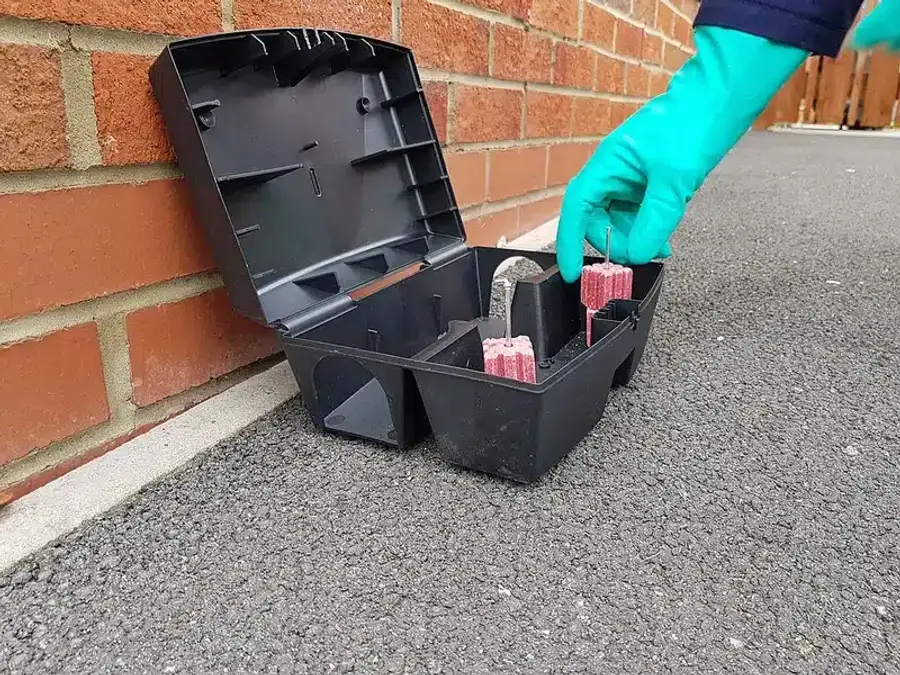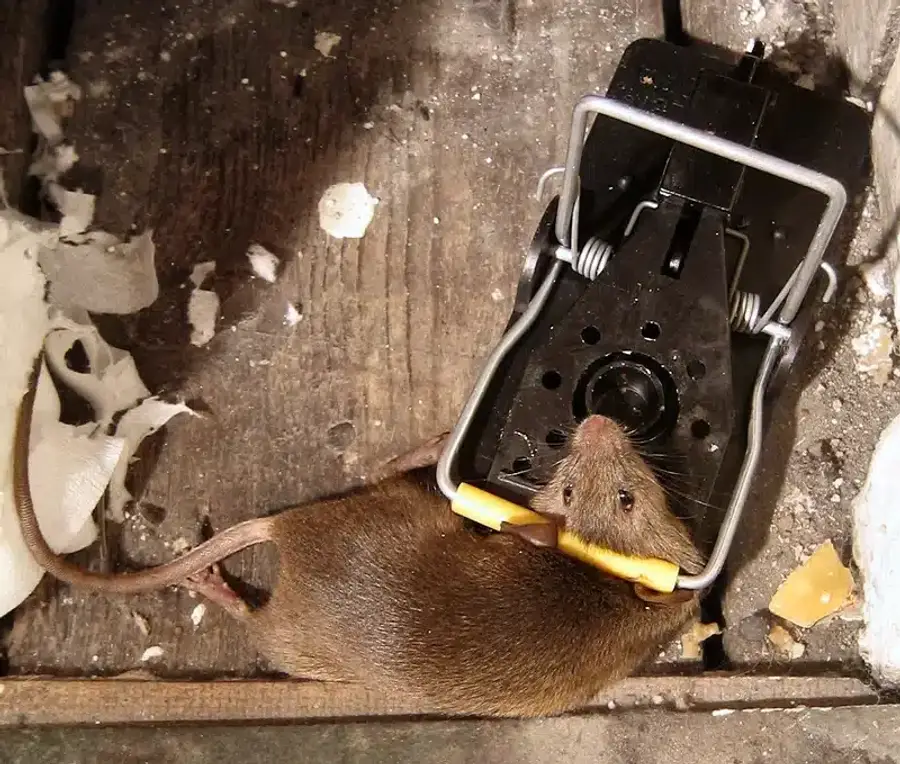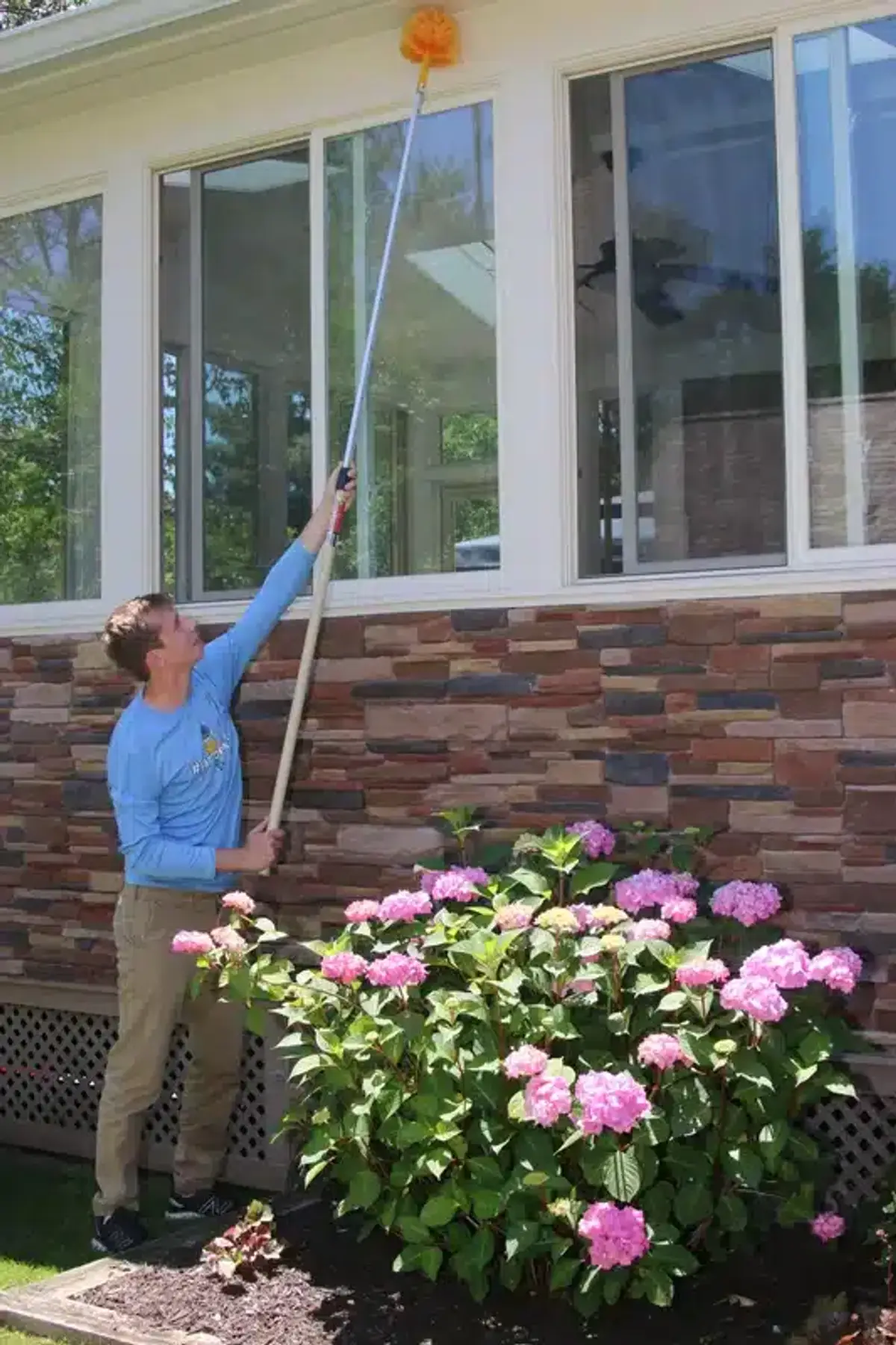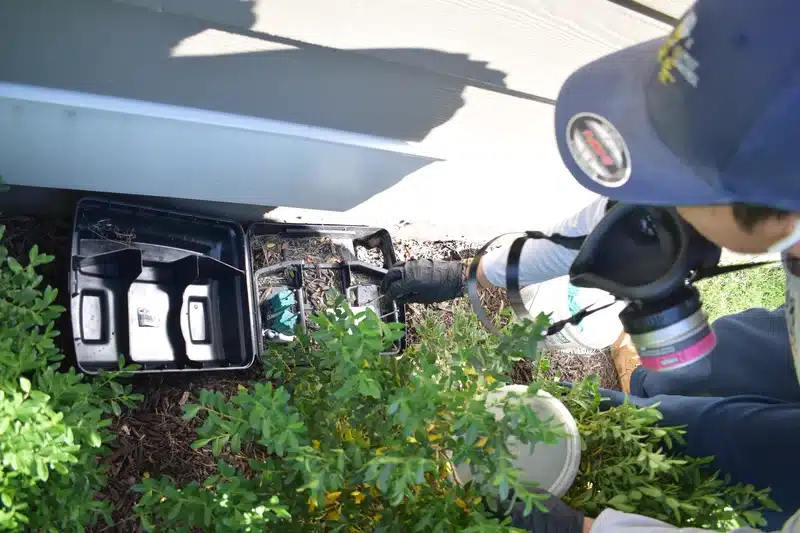Finding mice in your home can be unsettling. It’s more than just a nuisance; these tiny critters can carry diseases and cause real damage by gnawing on wires and wood. Many homeowners immediately search for the best mice repellent, hoping for a quick fix. Over the years dealing with pests in the Virginia, Maryland, and DC area, I’ve seen firsthand what truly works for effective mice prevention. Often, it’s not the sprays or gadgets you find online.
The truth is, the best mice repellent isn’t usually a single product. It’s a combination of smart strategies that address why mice came in and how to stop them from returning. This involves understanding how they think, blocking their paths, removing what draws them in, and getting rid of any already inside. Let’s look at what really keeps mice away.
Why Traditional Rodent Repellent Products Often Fall Short to Keep Mice Away
When you search for a mice repellent or mouse repellent, you’ll find plenty of options. Ultrasonic devices that plug into the wall are popular. So are strong-smelling essential oils like peppermint or potent chemicals like mothballs. Many people hope these rodent repellent products will simply drive mice out.
Unfortunately, these types of repellents rarely provide lasting relief. Mice might avoid an ultrasonic sound or a strong smell for a little while. However, studies show they quickly get used to these things, especially if food and shelter are nearby. According to NC State Extension, repellents are not considered a reliable form of mouse management or prevention. Volatile oils evaporate quickly, needing constant reapplication. Relying solely on these methods often leads to continued frustration and ongoing mouse problems. They aren’t the best mice repellent solution for a real infestation.
Understanding Mouse Behavior: How to Deter and Keep Rats and Mice Away from Your Home
To effectively repel mice, you need to know what makes them tick. The most common culprit indoors is the house mouse. They are small, curious, and built for survival. Needing very little food and water daily, even tiny crumbs can sustain them.
House mice are incredibly adaptable and breed quickly. A female can have litters every few weeks, leading to dozens of new mice in just months. They are also known for being able to squeeze through tiny openings - a gap just 1/4 inch wide, about the size of a pencil, is enough for a mouse to get through. This highlights why focusing on entry points is so critical for mice prevention.

You might also encounter field mice, like deer mice, especially in suburban areas bordering woods. While they prefer the outdoors, they’ll move inside seeking warmth, particularly in the fall. Understanding the differences between mice and rats can also help tailor your approach. Check out more about mice behavior here.
The Foundation: Sealing Entry Points is Key
The most effective, long-term mice repellent strategy is exclusion. Basically, this means physically blocking mice from getting inside your home in the first place. If they can’t get in, they can’t cause problems. This is the cornerstone of professional rodent control.
Start by carefully inspecting your home’s exterior and interior. Look for any cracks or holes, paying close attention to:
- Where the foundation meets the siding.
- Gaps around pipes, wires, and vents entering the house.
- Openings in attic or crawlspace screens.
- The bottom corners of doors, especially garage doors.




For small cracks (under 1/2 inch), stuff steel wool or copper mesh into the gap first. Then, seal over it with caulk. Mice can’t easily chew through the metal mesh. For larger holes, use hardware cloth (sturdy wire mesh), sheet metal, or cement patching. Sealing entry points might seem tedious, but it’s the most crucial step for lasting mice prevention and effective rodent control. We spend a lot of time on this during our inspections, making sure all potential routes are covered. This investment prevents future headaches and is your best defense - it’s what professionals prioritize in any comprehensive rodent control plan.
Clean Up: Removing What Attracts Mice
Mice come inside looking for food, water, and shelter. Removing these attractants makes your home far less inviting. This step, combined with sealing entry points, is powerful mice prevention.
Indoors:
- Store pantry food (including pet food) in airtight containers made of glass, metal, or thick plastic. Cardboard boxes are easy for mice to chew through.
- Clean up spills and crumbs immediately.
- Take out the trash regularly and use bins with tight lids.
- Reduce clutter in basements, attics, and garages. Piles of boxes or fabrics make perfect nesting spots.

Outdoors:
- Keep garbage cans tightly sealed. Place them away from the house if possible.
- Clean up fallen fruit from trees and pet waste promptly.
- Avoid leaving pet food bowls outside.
- If you feed birds, use spill-proof feeders or stop feeding temporarily if you have an active mouse problem. The EPA notes that bird feeders can attract rodents.
- Keep firewood stacked off the ground and away from the house. Trim dense bushes or vegetation near the foundation.
Good sanitation won’t eliminate mice already inside, but it makes trapping and rodent baiting more effective because mice will be more attracted to the bait. Find more tips to keep mice out here.
How to Get Rid of Mice: Effective Ways to Get Rid of Rats and Pest Control
Once you’ve started sealing entry points and cleaning up, you need to deal with any mice already inside. Trapping is often the best way to do this quickly and effectively. Forget unreliable mice repellent gadgets; direct removal works.
Snap traps are the go-to method recommended by experts, including the CDC. They provide a quick end for the mouse and let you confirm removal. Here’s how to use them best:
- Use plenty of traps: Don’t set just one or two. Place traps every few feet along walls where you see droppings or gnaw marks.
- Placement matters: Put traps perpendicular to the wall, with the trigger end facing the wall. Mice tend to run along edges. Good spots are behind appliances, under sinks, and in corners.
- Use the right bait: A pea-sized amount of peanut butter is classic. Chocolate spread or bacon bits can also work. Peanut butter is a highly recommended bait according to the CDC.
- Check traps daily: Remove caught mice promptly (wear gloves!) and reset the traps. Continue trapping until you see no more signs for at least a week. Consistency is key to success.
While glue traps and live traps exist, they are generally not recommended. The CDC advises against glue traps and live traps because stressed rodents can urinate, increasing disease risk. Stick with snap traps for safer, more decisive rodent control. Strategic placement and proper technique matter greatly, especially for larger infestations where professional help may be needed.
Rodent Repellent Pouches and Plug-in Deterrent Options: What Gets Rid of Rodents Away
For larger infestations or persistent problems, rodent baiting might be incorporated into the plan. Rodenticides (poisons) can effectively reduce populations, but they come with risks and are best handled carefully, often by professionals.
- Use Bait Stations: Never scatter loose bait. Always place rodenticides inside locked, tamper-resistant bait stations. This protects children, pets, and wildlife.
- Placement: Place bait stations along rodent travel paths, typically along walls or near suspected entry points/nests. Outdoors, they might go around the building perimeter.
- Professional Use: Because of the potential hazards and the need for strategic placement, rodent baiting is often best left to licensed technicians. We use it strategically as part of our 4-step protocol, primarily outdoors or in inaccessible areas like crawlspaces, while focusing on trapping indoors. This minimizes risks inside the living space while complementing other control methods. Professionals can properly assess whether baiting is needed and monitor its effectiveness.
Remember, rodent baiting should supplement, not replace, sealing entry points and sanitation. Learn more about integrated approaches in our ultimate guide to rodent control.
The Best Way to Get Rid of Mouse Away Without Killing: Professional Rodent Control Solutions
While DIY methods like trapping and sealing entry points can work for small issues, tackling a significant mouse problem often requires professional help. This is where finding the best mice repellent strategy truly comes together. As a company with over 57 years of experience serving over 100,000 homes in the DC metro area, we’ve refined our approach.
Here’s what professional rodent control offers:
- Expert Inspection: Licensed technicians perform a thorough inspection (our 78-point inspection) to find all entry points, nesting sites, and contributing factors you might miss.
- Integrated Plan: We use a multi-pronged approach combining exclusion (sealing entry points), sanitation advice, effective trapping, and strategic rodent baiting. It’s not just about putting down bait; it’s a complete system customized for your home.
- Follow-Up & Maintenance: Our 4-step rodent protocol includes follow-up visits (often at 1 and 3 weeks initially) to ensure the plan is working. We then transition to tri-annual visits (three times per year) to maintain control, re-baiting stations and checking for new activity. This long-term view is crucial.
- Peace of Mind: If issues persist between scheduled visits, our Better Promise means we offer unlimited callbacks at no extra charge. Plus, there are no binding contracts; you can cancel anytime with 30 days’ notice.
We provide reliable rodent control services in Reston, Alexandria, and surrounding areas like Arlington and Potomac. Relying on ineffective mice repellent products often just delays solving the real problem. Professional rodent control delivers lasting results through comprehensive, integrated strategies.
Conclusion: Beyond Repellents to Real Rodent Control
Searching for the best mice repellent often leads down a path of temporary fixes and frustration. True, lasting mice prevention and rodent control come from an integrated approach. It starts with sealing entry points to deny access, followed by rigorous sanitation to remove attractants. Effective trapping eliminates mice already inside, and strategic, careful rodent baiting can address larger populations when needed.
This comprehensive strategy - exclusion, sanitation, trapping, and sometimes rodent baiting - is the core of professional rodent control. It’s far more effective than any single mice repellent, mouse repellent, or rodent repellent product on the market. It requires diligence and often the expertise of trained professionals who understand rodent behavior and the best ways to stop them. That’s the real secret to keeping your home mouse-free.
If you’re dealing with mice and looking for a reliable solution beyond ineffective repellents, give us a call. Our licensed technicians can provide a detailed phone consultation and help create a plan tailored to your home.
Contact Better Termite & Pest Control today at 703-683-2000 or email us at info@bettertermite.com for expert help with rodent control.
Frequently Asked Questions About the Best Mice Repellent
What is the best mice repellent for my home?
+
The best mice repellent isn't a single product, but an integrated strategy. This combines sealing entry points (exclusion) to keep mice out, sanitation to remove food sources, and trapping to remove existing mice. Sometimes, strategic rodent baiting is used, often best handled by professionals.
Do ultrasonic devices actually work as a mice repellent?
+
Ultrasonic devices may initially bother mice, but studies show rodents quickly get used to the sound (habituate). They are not a reliable long-term mouse repellent or rodent repellent, especially if food and shelter are readily available. They are not considered an effective part of professional rodent control.
Is peppermint oil a good mouse repellent?
+
Like ultrasonic devices, strong scents like peppermint oil might temporarily deter mice. However, the scent fades quickly and needs constant refreshing. A determined mouse will likely ignore the smell if food is nearby. It's not a dependable method for mice prevention or control.
Why is sealing entry points so important for rodent control?
+
Mice can squeeze through incredibly small holes (as small as 1/4 inch). Sealing entry points physically blocks them from entering your home. This exclusion technique is the most effective long-term mice prevention strategy and a core component of professional rodent control. It addresses the root cause, unlike temporary mice repellent sprays.
How important is cleaning up for mice prevention?
+
Very important. Mice are attracted to food crumbs, spills, unsecured pantry items, pet food, and clutter for nesting. Removing these attractants through good sanitation makes your home much less appealing. It supports trapping and rodent baiting efforts and is crucial for long-term mice prevention.
Should I use traps or bait for mice?
+
Trapping, especially with snap traps, is usually the preferred method for mice inside the home. It allows for quick removal and confirmation. Rodent baiting is often used more strategically, sometimes outdoors in secure stations or for large infestations, and is frequently managed by professionals due to safety considerations. A good rodent control plan might use both.
How often does my home need rodent control service?
+
Initially, follow-up visits might be needed after 1-3 weeks to check traps/bait and assess activity. For long-term mice prevention and maintenance, tri-annual service (three times per year) is often recommended, especially in areas with high rodent pressure. This keeps the protective measures effective.
Are your rodent repellent pouches and pest control methods safe for homes with pets and children?
+
We prioritize using methods and products approved by our internal research team, focusing on approaches we'd use in our own homes. We focus on sealing entry points, mechanical trapping indoors, and placing any necessary baits in tamper-resistant stations, primarily outdoors or in inaccessible areas, following strict protocols.
With five years of hands-on experience in the pest control industry, George Schulz is a registered technician with the Virginia Pest Management Association and a proud third-generation professional in a family business that's been protecting homes for over 57 years. He manages and trains a team of service pros while also leading internal research efforts—recently spearheading a deep-dive review of thousands of documents on pest control materials to hand-pick the most kid and pet friendly, most effective solutions tailored specifically for homes in the DC metro area.
